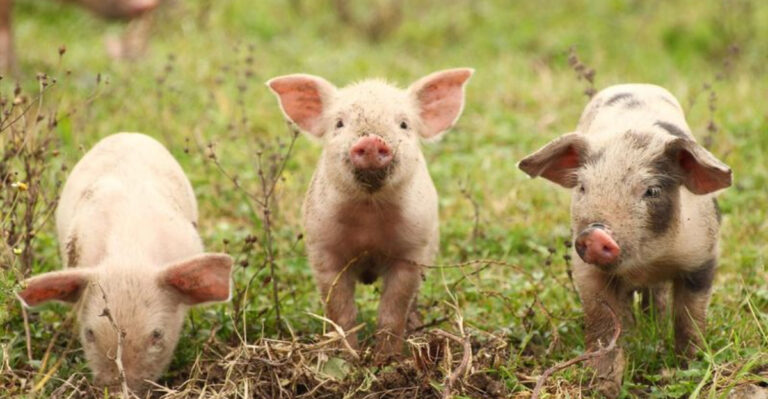8 Words Dogs Understand (And 5 They Struggle With)

Have you ever wondered if your dog really understands what you’re saying? Turns out, dogs are way smarter than we give them credit for – and they can actually learn a ton of words!
But here’s the thing: no matter how much you talk to them, there are some words that just don’t stick. In this list, we’ll dive into the words your dog definitely knows and the ones that will always be a mystery to them.
1. Ball
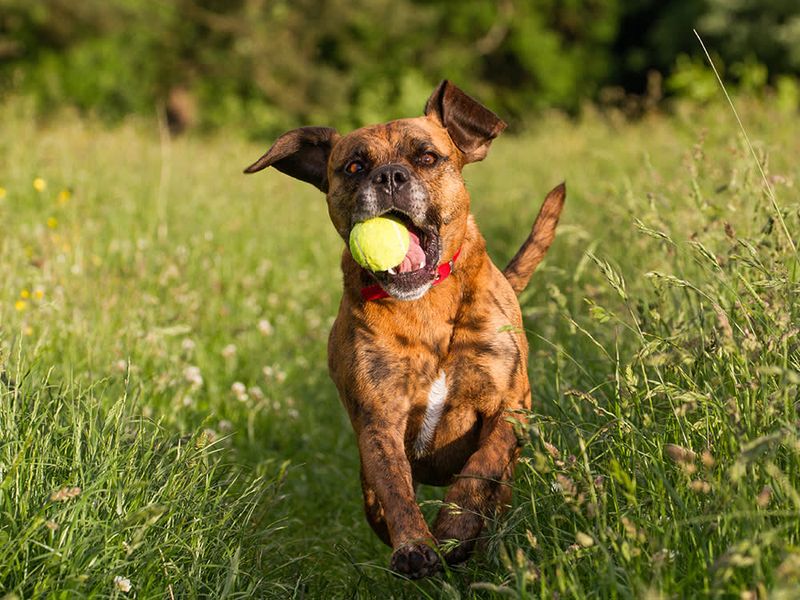
For many dogs, the word “ball” is akin to magic. It brings excitement and anticipation. Imagine the wide eyes and wagging tails as soon as the word is uttered, a universal signal for playtime.
The repetitive action of fetching the ball hones their skills and provides excellent physical exercise.
Dogs often associate it with happy outings, bonding moments with their owners, and the sheer thrill of the chase. It’s no wonder that “ball” is etched in their memory.
2. Their Name

The first word a dog often learns is their own name. It’s not just a label; it’s a signal that something important is happening.
When they hear their name, dogs tend to perk up and focus. This word becomes synonymous with attention, affection, and communication.
Whether it’s followed by a command, a treat, or a walk, their name is a word loaded with meaning. It’s their personal call to action.
Creating positive associations with their name strengthens your bond.
Remember, consistency in tone and context helps them recognize and respond eagerly. Personalized communication begins with this simple word.
3. Stay
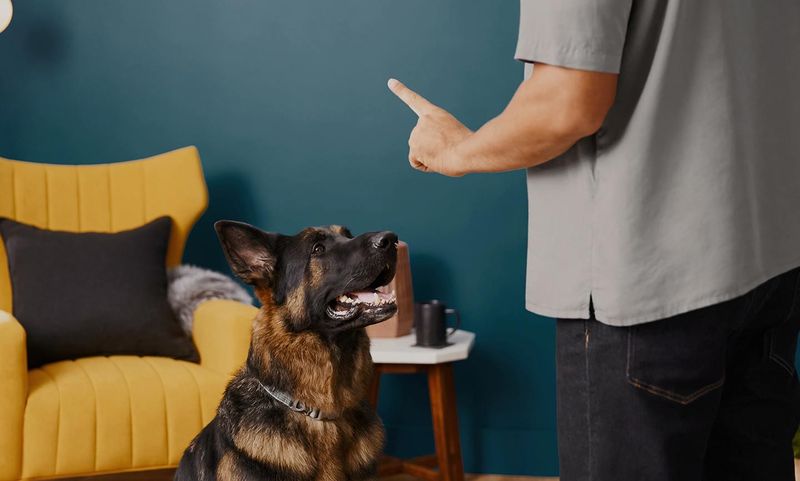
“Stay” is a command that requires patience and trust. It teaches dogs self-control and the ability to remain in place until released.
When you say “stay,” you’re asking for stillness amidst distractions. Dogs learn to “stay” through steady practice and rewards. It’s a command that enhances safety, preventing them from running into danger.
Repetition and consistency are crucial in mastering “stay.”
Start with short durations and gradually increase. Establishing this command boosts your dog’s discipline.
A reliable “stay” command ensures your furry friend can navigate various environments safely.
4. Sit

“Sit” is often one of the first commands taught to dogs. It’s a fundamental skill that signifies good behavior. When a dog hears “sit,” they understand that you’re asking for calmness and control.
This command lays the groundwork for other commands, promoting discipline.
Training a dog to sit involves patience and positive reinforcement. Praise and treats are your best allies. The more they associate “sit” with rewards, the quicker they’ll respond.
This command is key to managing situations, both at home and in public settings. A well-taught “sit” opens doors to advanced obedience.
5. Come
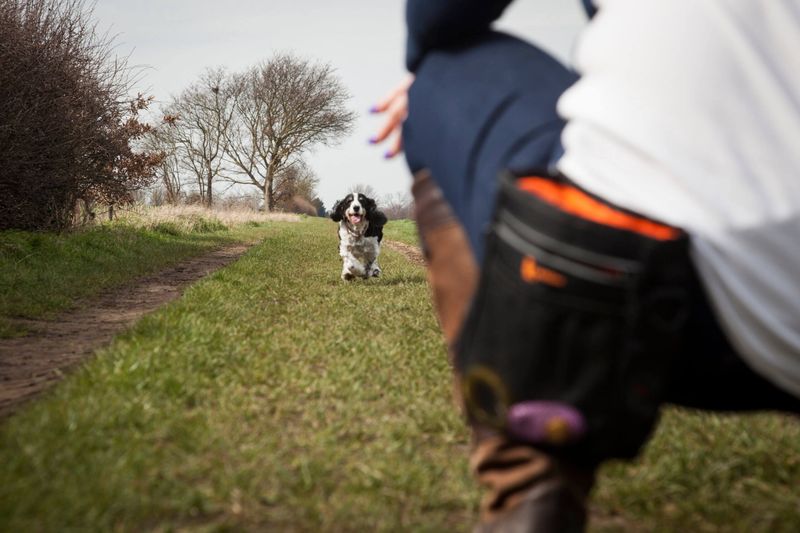
“Come” is a crucial command that encourages dogs to return to their owner. It fosters safety and trust, ensuring your dog returns when called.
Teaching “come” involves positive reinforcement, making it a rewarding experience. This command can be lifesaving, redirecting them from potential hazards.
Practice “come” in a secure environment and gradually introduce distractions. With patience, your dog will associate “come” with positive experiences and rewards.
The reliability of this command strengthens the bond and enhances safety. “Come” is a word that embodies trust and the joy of reunion.
6. No

“No” is an essential word for setting boundaries and correcting unwanted behavior. Used with consistent tone and firmness, it teaches dogs what’s not acceptable.
To keep it effective, use “no” sparingly and with purpose, so your dog clearly associates it with stopping certain actions.
Pairing “no” with redirection toward better behavior helps guide them without creating fear.
When used properly, “no” builds clear communication and mutual respect between you and your dog.
7. Walk

The word “walk” sparks instant excitement in almost every dog. It’s more than just exercise – it’s a chance to explore, sniff, and engage with the world. The sound of a leash or jingling keys only adds to their anticipation.
Regular walks not only boost physical health but also provide crucial mental stimulation. Dogs thrive on routine, and “walk” is often the highlight of their day.
Varying the route and environment keeps walks interesting, turning this simple word into an adventure your dog looks forward to every time.
8. Treat

“Treat” is a word that grabs a dog’s attention instantly, tied to rewards and positive reinforcement.
It’s a powerful motivator, helping dogs learn that good behavior leads to something tasty. Used wisely in training, treats encourage focus and obedience.
To keep them effective, balance treats with praise and affection, so they don’t lose their value.
More than just a snack, “treat” represents joy and connection, strengthening the bond between you and your dog in a simple, meaningful way.
9. Why

Curiosity might be a human trait, but for dogs, ‘why’ is irrelevant. They react instinctively, driven by senses rather than reasoning. A dog’s life is guided by instincts and reactions, not pondering questions or motives.
Imagine observing a squirrel. Dogs focus on the chase, never questioning the reason. ‘Why’ doesn’t hold value in their immediate world of scents and movements.
They follow urges rather than inquiries. It’s a life rich in experience, not in introspection. For dogs, ‘why’ is an unnecessary question, as instincts lead their way.
10. Sorry

Dogs, with their wagging tails and soulful eyes, don’t grasp the concept of ‘sorry.’ To them, emotions are felt, not articulated. While humans often express remorse verbally, dogs rely on physical cues. A gentle pat or a soothing voice can convey more than words ever could.
Imagine a puppy getting scolded for chewing shoes. Your ‘sorry’ means little without the reassuring petting.
11. Later
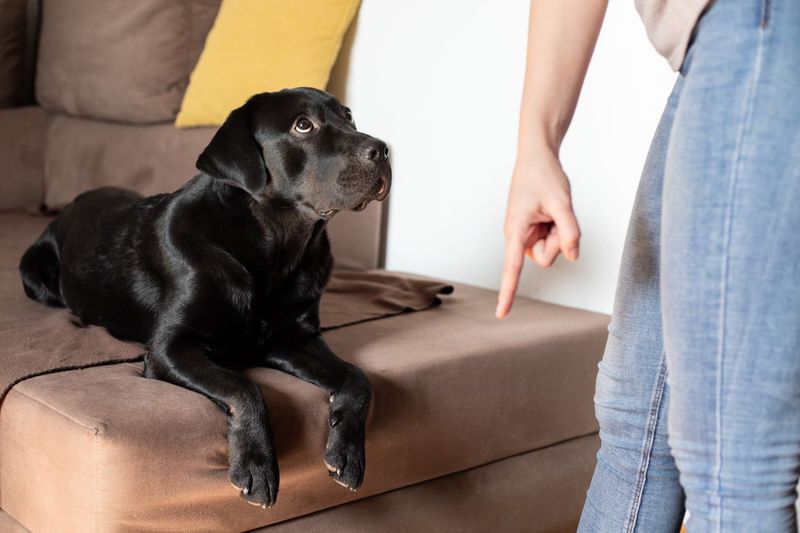
While dogs excel at understanding immediate commands, words like “later” leave them puzzled.
Concepts of time elude them, making it challenging to grasp the idea of a future event. This can lead to moments of adorable confusion, as dogs seek clarity in their owners’ tones and expressions.
When told “later,” a dog might still expect immediate attention or action, not understanding the delay.
This word highlights the gap between human language and canine perception, reminding us of the unique communication barriers we navigate with our furry friends.
12. Maybe

‘Maybe’ is a concept foreign to dogs, who thrive on certainty and routine.
A dog’s world is filled with clear signals and direct actions. Indecision is not in their nature. When a human says ‘maybe,’ a dog doesn’t register the ambiguity.
Consider a dog waiting for a walk. A ‘maybe later’ is meaningless. They understand ‘walk’ or ‘now,’ but ‘maybe’ is lost in translation.
Dogs look for consistent cues, relying on routine and habit. Their lives are simple, devoid of gray areas, where ‘maybe’ is not part of their vocabulary. For them, life is about definite experiences.
13. Tomorrow

Time is an abstract concept for dogs, living in the now. ‘Tomorrow’ means nothing to them.
They sense immediate needs and desires, like hunger or playtime, but a future event such as ‘tomorrow’s walk’ is beyond their grasp.
Imagine telling your dog about tomorrow’s plans. They’ll respond to your enthusiasm but won’t comprehend the timing.
Dogs live day by day, responding to present stimuli. ‘Tomorrow’ holds no significance in their simple, immediate world. For them, joy is in the current moment, not in plans or promises yet to unfold.

